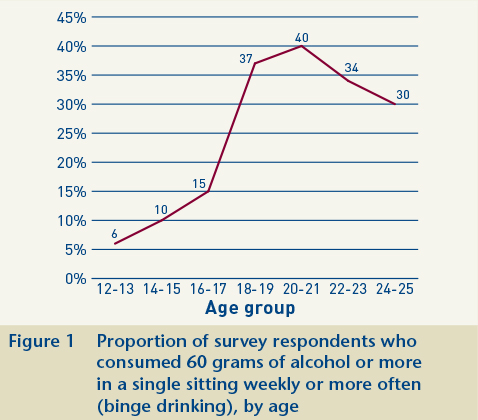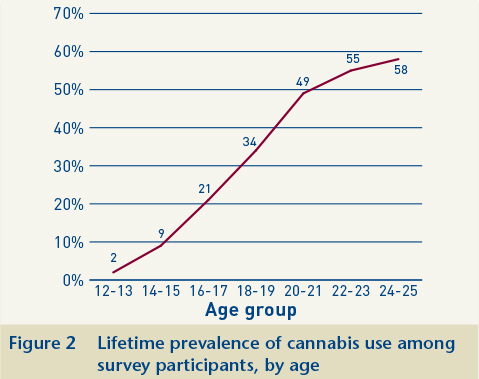Long, Jean (2012) National survey of youth mental health. Drugnet Ireland, Issue 43, Autumn 2012, pp. 10-11.
| Preview | Title | Contact |
|---|---|---|
|
PDF (Drugnet Ireland issue 43)
- Published Version
1MB |
Researchers at University College Dublin and Headstrong, the non-profit support organisation, completed a national survey which examined youth mental health.1 The researchers estimated the proportion of young people experiencing common mental health problems and explored the known risk and protective factors that are associated with mental health status.
- One in ten second-level students and between 12% and 16% of young adults reported high-levels of anger.
- Five per cent of second-level students and 10% of young adults were very or severely stressed. The main sources of stress for second–level students were school, friends and family, and for young adults were college, money, work and family.
- Eleven per cent of second-level students and 14% of young adults had severe or very severe anxiety.
- Eight per cent of second-level students and 14% of young adults had severe or very severe depression.
- A small proportion second-level students reported avoidance strategies.
- Two-fifths of second-level students experienced bullying at some point in their life and 77% of bullying episodes occurred at school.
- Five per cent of second-level students ranked themselves at the bottom of their class and these students were more likely to experience anxiety and depression.
- One-fifth of young adults had deliberately hurt themselves at some point in their life and 7% had attempted suicide.
- Four-fifths (79%) of second-level students (aged 12–19 years) consumed alcohol within the normal adult limits (below 8 on the AUDIT scale).
- One-fifth (21%) of second-level students consumed alcohol in excess of the normal adult limits (8 or above), with 15% scoring as problem drinkers, 3% as hazardous or harmful drinkers and 3% as dependent drinkers.
- Two-fifths (39%) of young adults (aged 17–25 years) were classified as drinking within safe limits;
- Three-fifths of young adults were classified as drinking in excess of normal limits, with 41% scoring as problem drinkers, 10% as hazardous or harmful drinkers and 10% as dependent drinkers.
- Binge drinking (drinking six or more standard alcoholic drinks, 60g, in a single sitting) was common among both second-level students and young adults (Figure 1). Binge drinking weekly or more often increased with increasing age up to 21 years and then decreased somewhat.
- At least eight per cent of the young people in this study aged 14–25 years drank 10 or more standard drinks on a typical drinking day. Drinking 10 or more standard alcoholic drinks on a typical drinking day is an indicator of harmful or dependent drinking.

Cannabis use was less common than alcohol use. Nevertheless considerable proportions reported using cannabis at some point in their life and its use increased with increasing age (Figure 2). Forty-five per cent of young adults (aged 17–25) used cannabis. Young adult males (52%) were more likely to report cannabis use than their female counterparts (42%). Over three quarters (77%) reported that they took cannabis for the first time between 15 and 19 years of age.

A six-item, yes/no response scale called CRAFFT was used to measures levels of substance misuse; a score of 2 or more indicates a high level of substance misuse. One-quarter of second-level students and half of the young adults scored 2 or more on the CRAFFT scale.
T Demographic characteristics > Adolescent / youth (teenager / young person)
VA Geographic area > Europe > Ireland
B Substances > Alcohol
G Health and disease > Substance use disorder > Alcohol use disorder
B Substances > Cannabis / Marijuana
G Health and disease > Substance related disorder > Substance related mental health disorder
Repository Staff Only: item control page